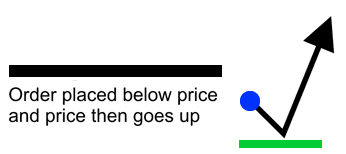Babypips Forex Notes
1/102
Earn XP
Description and Tags
Notes from the Babypips.com website preschool module https://www.babypips.com/learn/forex/preschool
Name | Mastery | Learn | Test | Matching | Spaced |
|---|
No study sessions yet.
103 Terms
Currency Pairs
There are HUNDREDS of these in existence, but not all can be traded in the FX market.
The base currency
In this image, what is “EUR“
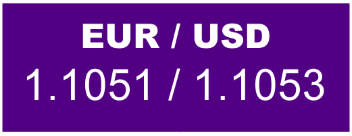
The counter/quote currency
In this image, what is “USD“
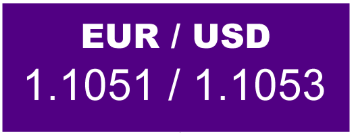
The bid price
In this image, what is “1.1051“ (the first number)

The ask price
In this image, what is “1.1053“ (the second number)
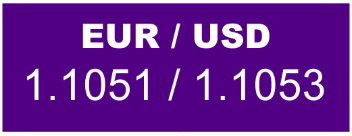
2 pips
In this image, how large is the spread
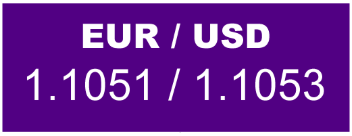
Major currencies
The most traded currencies in the world, typically from countries with large, stable economies.
Major currencies
Highly liquid and widely accepted in the forex market
Major currencies
USD, EUR, JPY, GBP, CHF, CAD, NZD, and AUD
Minor currencies
Currencies from smaller or emerging market economies.
Minor currencies
These currencies are still traded in significant volumes but are less liquid compared to the major currencies.
Minor currencies
Often come from countries with developing economies or smaller financial markets.
Exotic currencies
Currencies from smaller, less developed, or emerging market economies.
Exotic currencies
Less liquid and more volatile compared to major and minor currencies.
Exotic currencies
Trading these currencies often involves higher spreads and can be riskier.
Base Currency
First currency in any currency pair.
USD
Normally considered the “base” currency for quotes, meaning that quotes are expressed as a unit of 1 of this currency per the other currency quoted in the pair.
Quote Currency/Counter Currency
The second currency in any currency pair.
Quote Currency/Counter Currency
Frequently called the pip currency and any unrealized profit or loss is expressed in this currency.
Pip
The smallest unit of price for any currency.
Pipette
a fractional pip.
Pip
percentage in point
Pip
The standard unit of measurement for price movements in the forex market
Pipette
One-tenth of a pip.
Pipette
Allows for more precise entry and exit points in trading, which can be important for high-frequency trading strategies.
Bid Price
The price at which the market is prepared to buy a specific currency pair in the forex market.
Bid Price
Price shown on the left side of the quotation.
Ask Price/Offer Price
The price at which the market is prepared to sell a specific currency pair in the forex market.
Ask Price/Offer Price
At this price, you can buy the base currency.
Ask Price/Offer Price
Shown on the right side of the quotation.
Spread
The difference between the bid and ask price
Big Figure Quote
The dealer expression referring to the first few digits of an exchange rate
Big Figure Quote
These digits are often omitted in dealer quotes.
Quote Convention
The standard way in which exchange rates are expressed
Spread
The transaction cost for a round-turn trade.
Round-turn
A buy (or sell) trade and an offsetting sell (or buy) trade of the same size in the same currency pair.
Spread Formula
Transaction cost (spread) = Ask Price - Bid PriceCross-Currency Pairs
Any currency pair in which neither currency is the U.S. dollar.
Cross-Currency Pairs
These pairs exhibit erratic price behavior since the trader has, in effect, initiated two USD trades.
Cross-Currency Pairs
Frequently carry a higher transaction cost
Leverage
The ratio of the amount of capital used in a transaction to the required security deposit ( the “margin“)
Leverage
The ability to control large dollar amounts of a financial instrument with a relatively small amount of capital.
Leverage
ranges from 2:1 to 500:1
Order
An offer sent using your broker’s trading platform to open or close a transaction if the instructions specified by you are satisfied
Order
How you will enter or exit a trade.
Market Order
An order instantly executed against a price that your broker has provided
Pending Order
An order to be executed at a later time at the price you specify
Market Order
Order type of Buy and Sell
Pending Order
Order type of Buy Limit, Buy Stop, Sell Limit, and Sell Stop
Market Order
An order to buy or sell at the best available price
Market Order
When you place a ___ ___, depending on market conditions, there may be a difference between the price you selected and the final price that is executed (or “filled”) on your trading platform.
Limit Order
An order placed to either buy below the market or sell above the market at a certain price
Buy Limit
Order to buy at or below a specified price
Sell Limit
Order to sell at a specified price or better
Limit Order
Can only be executed when the price becomes more favorable to you
Limit Order
You use this type of entry order when you believe the price will reverse upon hitting the price you specified!
BUY
A limit order to ___ at a price below the current market price will be executed at a price equal to or less than the specified price.
SELL
A limit order to ___ at a price above the current market price will be executed at a price equal to or more than the specific price.
Stop Order
Used when you want to buy only after the price rises to the stop price, or sell only after the price falls to the stop price
Stop Entry Order/Stop Order
Placed to buy above the market or sell below the market at a certain price
Buy Stop
Order to buy at a price above the market price, and it is triggered when the market price touches or goes through the stop price.
Sell Stop
Order to sell when a specified price is reached.
Stop Entry Order/Stop Order
Can only be executed when the price becomes less favorable to you.
Stop Loss (Order)
An order to close out if the market price reaches a specified price, which may represent a loss or profit.
Stop Loss (Order)
Order linked to a trade for the purpose of preventing additional losses if the price goes against you
Sell Stop/Sell Stop Order
Stop loss order in a long position
Buy Stop/Buy Stop Order
Stop loss order in a short position
Stop Loss (Order)
Remains in effect until the position is liquidated or you cancel this order
Stop Order
NOT guaranteed a specific execution price and in volatile and/or illiquid markets, may execute significantly away from its stop price.
Stop Order
May be triggered by a sharp move in price that might be temporary.
SELL
If triggered during a sharp price decline, a ___ stop loss order is more likely to result in an execution well below the stop price.
BUY
If triggered during a sharp price increase, a ___ stop loss order is more likely to result in an execution well above the stop price.
Trailing Stop (Order)
A stop loss order which is always attached to an open position and which automatically moves once profit becomes equal to or higher than a level you specify.
Trailing Stop (Order)
a type of stop loss order attached to a trade that moves as the price fluctuates.
Market Order
Once the market price hits your trailing stop price, a ____ ____ to close your position at the best available price will be sent, and your position will be closed.
Stop Order
Activates an order when the market price reaches or passes a specified stop price
Limit Order
Can only be executed at a price equal to or better than a specified limit price
Stop Price
A threshold for your order to execute; At what exact price that your order will be filled at depends on market conditions.
Limit Price
A price guarantee that your order only gets executed at your limit price (or better) with the caveat that the market price may never reach your limit price, so your order never executes.
Time-in-Force Orders/TIF Orders
Special instructions that tell a broker or trading platform how long an order should remain active before it is canceled if not executed
Good For the Day/GFD
This is the default TIF for most trading platforms. The order remains active until the end of the current trading day. If not filled by then, it is automatically canceled.
Good ‘Till Cancelled/GTC
The order remains active until it is either filled or manually canceled by the trader. Yep, that’s right. A GTC order remains active in the market until you decide to cancel it.
Immediate or Cancel/IOC
The order must be filled immediately in full or in part. Any portion of the order that cannot be filled immediately is canceled.
Fill Or Kill/FOK
This is similar to IOC but stricter. The entire order must be filled immediately; otherwise, the whole order is canceled.
Good Till Date/GTD
The order remains active until a specified date. If not filled by the end of that date, it is canceled.
TIF Order
Allows you to specify when you want your order to be executed, giving you more control over the timing of your trades
TIF Order
Can avoid unexpected price movements that might occur if your order remains active for too long
IOC
Certain TIF orders, like ___ and FOK, can help you get your trade executed quickly if there is enough liquidity in the market.
Conditional Orders
Linked orders that become active based on specific conditions being met
One-Cancels-the-Other/OCO
Consists of two orders linked together. If one order is executed, the other order is automatically canceled.
One-Triggers-the-Other/OTO
Consists of two orders linked together. The execution of one order triggers the placement of the other order.
One-Triggers-the-Other/OTO
Often used for entering trades and setting up subsequent actions based on the initial trade’s outcome.
One-Triggers-the-Other/OTO
You set a(n) ___ order when you want to set profit-taking and stop loss levels ahead of time, even before you get in a trade.
Conditional Orders
Require careful planning and understanding of the underlying mechanics to use effectively.
Buy Stop/Buy Stop Order
Used to open a long position at a price higher than the current price
Sell Stop/Sell Stop Order
Used to open a short position at a price lower than the current price
Buy Limit/Buy Limit Order
Used to open a long position at a price lower than the current price
Sell Limit/Sell Limit Order
Used to open a short position at a price higher than the current price
Buy Stop/Buy Stop Order
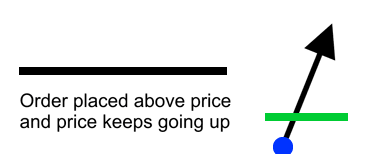
Buy Limit/Buy Limit Order
